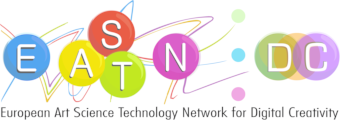WUIM (Waking Up In the Morning) is an inclusive transmedia project that aims to facilitate the training of nursery and primary school students with and without learning difficulties. WUIM was designed based on contemporary learning theories and gamification techniques and was developed with updated cutting-edge technologies, such as AR, VR and 360o interactive videos.
Objective
Two gamified applications have been developed. The story (concept, content, characters/avatars/agents, plot) is shared between both applications but the way interaction is designed takes advantage of specific medium characteristics, offering the user a fresh perspective, which is a key aspect of transmediality. Both the concept and content were drawn from the field of training children in daily living skills and in particular the activities performed during the morning routine. Τhe first game, the WUIM-AR, was developed with augmented reality technology and the second, the WUIM-VR, with virtual reality and 360-degree videos. The purpose of this paper is to describe the transmedia game development process and present the environment in which the two applications were created, the way their components were implemented such as sounds, graphics and audio-visual effects and the reasons behind specific design decisions.
Method
Both applications were developed using Unity as the underlying Game Engine which allows fully-featured applications to be implemented for free under educational licensing and provides all the basic functions needed to build a game and many minor functions to speed up the development process. Unity also offers a unified environment in which the game developer can manage game assets such as graphics, sounds, and code used to implement the game's logic (scripts). In addition, the environment, allows the creation of game levels, debugging, sound mixing, performance measurement (profiling) and many other tools useful for the development process. Furthermore, for WUIM-AR the Vuforia engine was used due to its compatibility with Unity and similar licensing terms. Vuforia’s image training and recognition routines are used to identify the physical items through the handheld device camera, which are then linked to the content that includes 3D models and video displayed within the augmented reality application. WUIM-AR supports interaction through mobile devices (tablets and smartphones). Navigation is implemented through the user’s movement and game elements are detected by the sensor (camera or LiDAR sensor). Touch is used as a means of interacting with the content and interface environment.
Conclusion
This work has provided the design and development team with a wide range of expertise in the development of reusable transmedia systems using different interaction environments. One important issue is the economy on content production, as this was designed once and re-used within both applications, with minimal changes. Another issue is the way that users transcend between the VR and AR versions of the system, a process that was extensively analysed and reported by the developers (Karakoutis, 2021). The coding process was generalized and standardized in order to allow both systems to be extended and their main logical components that support the storyline to be re-used under different contexts. The development team provided the necessary "know-how" to teachers who are now able to develop their own AR/VR content using the base system by offering adaptable open access examples. Instructions were created in Greek and English describing step by step all the stages that need to be followed by teachers in collaboration with their students. The aforementioned characteristics are particularly significant for the WUIM-VR system which features full immersion using smartphone-based head-mounted display devices and hence it is characterised as a more complex implementation. Therefore one may argue that WUIM-VR is designed in such a way that enables teachers who do not have programming skills to create their own learning scenarios and produce their own videos, reuse the XML-based schema to describe the functionality and ultimately develop their own game.
Back
“Reflections: Bridges between Technology and Culture, Physical and Virtual”
is supported by:






